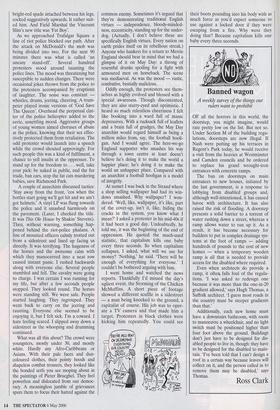Banned wagon
A weekly survey of the things our rulers want to prohibit
OF all the horrors in this world, the doorstep, you might imagine, would rate pretty low on the list. But not so. Under Section M of the building regu- lations, doorsteps are now illegal. If Nash were putting up his terraces in Regent's Park today, he would receive a visit from the heavies at Westminster and Camden councils and be ordered to replace his grand wrought-iron entrances with concrete ramps.
The ban on doorsteps on main entrances to new houses, initiated by the last government, is a response to lobbying from disabled groups and, although well-intentioned, it has caused havoc with architecture. It has also raised the risk of flooding. A doorstep presents a solid barrier to a torrent of water rushing down a street, whereas a ramp allows water to run up it. As a result, it has become necessary for builders to put in complex drainage sys- tems at the foot of ramps — adding hundreds of pounds to the cost of new homes — when a temporary wooden ramp is all that is needed to provide access for the disabled where required.
Even when architects do provide a ramp, it often, falls foul of the regula- tions. 'I was asked to redesign one because it was more than the one-in-20 gradient allowed,' says Hugh Thomas, a Suffolk architect. 'I guess most roads in the country must be steeper gradients than that.'
Additionally, each new home must have a downstairs bathroom, with room to manoeuvre a wheelchair, and no light switch must be positioned higher than four foot above the ground. Buildings don't just have to be designed for dis- abled people to live in, though: they have to be designed for the disabled to main- tain, 'I've been told that I can't design a roof in a certain way because leaves will collect on it, and the person called in to remove them may be disabled,' says


































































 Previous page
Previous page